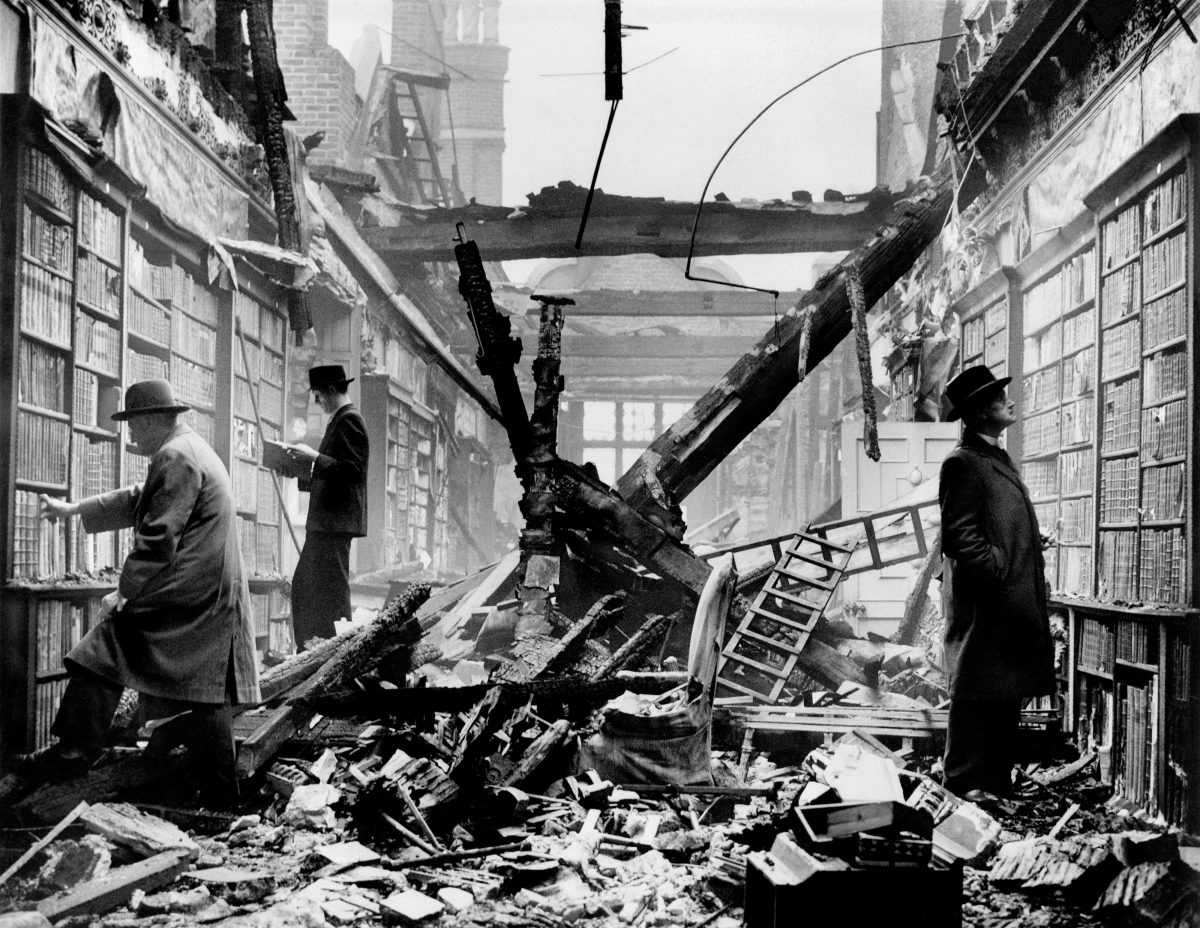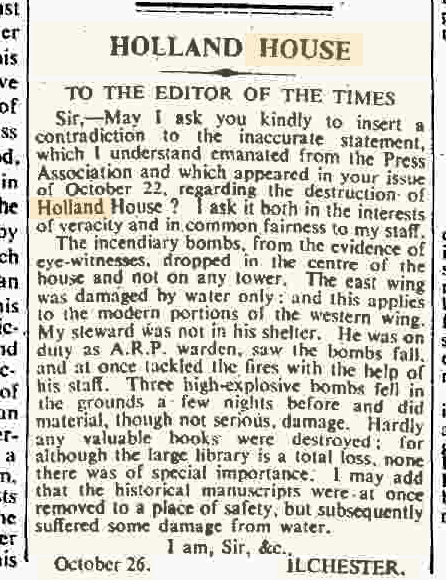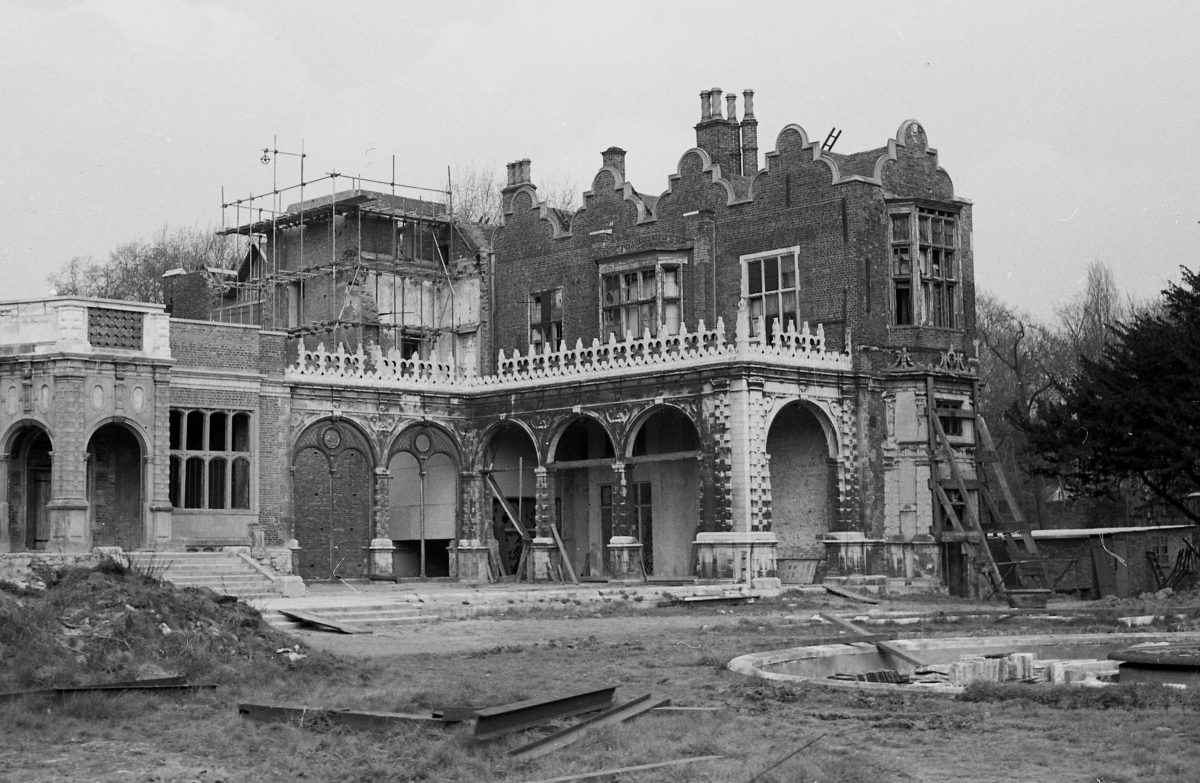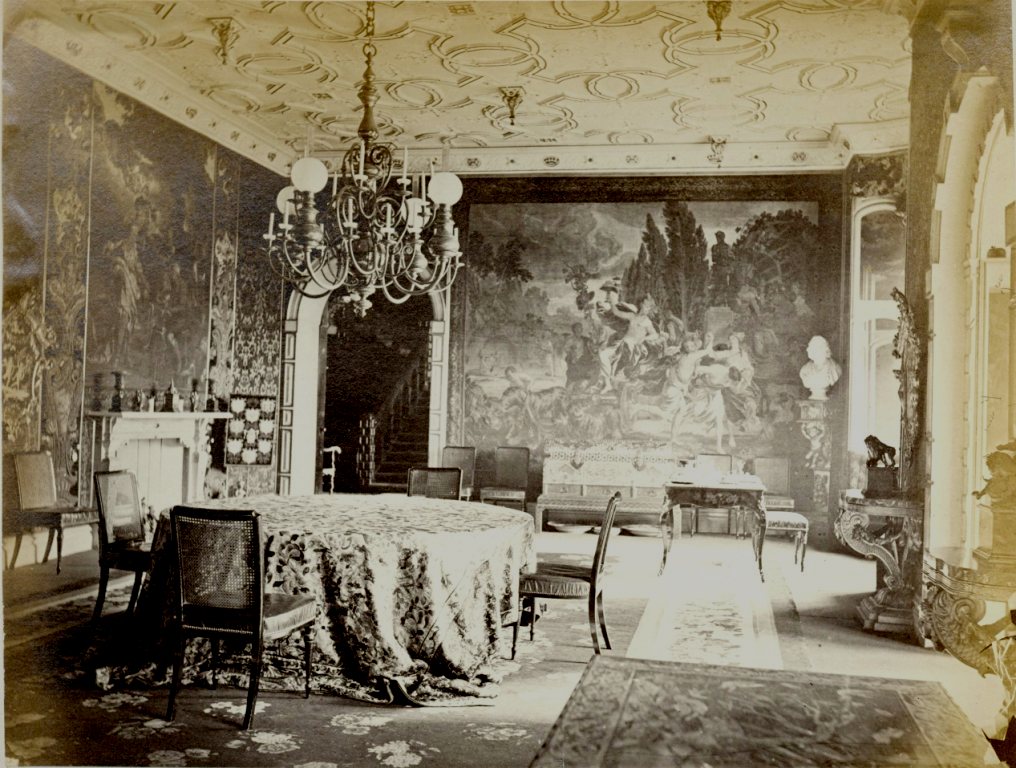Hitler Again Burns Books – This Time in London
Incendiary bombs and fire have gutted London’s historic Holland House, but readers still trudge to its library. The famous London landmark on Kensington Road was built in 1607. Its library contains many books written by authors who once lived there, including Joseph Addison, founder of the Spectator, Sheridan, Sir Walter Scott and Lord Macaulay. Other famous residents were Oliver Cromwell and the Prince of Wales who later became George IV.
– The Morning Herald, November 5, 1940
On the evening of 27 September, 1940, German planes hit London’s Holland House with 22 incendiary bombs during a ten-hour raid. The rambling Jacobean country house built in 1605 on a country estate that is now Holland Park was largely destroyed, with only the east wing, and, incredibly, almost all of the library remaining undamaged.
A few weeks after the attack, the British Government circulated a picture of the scene. It’s the striking image at the top of this post. The three well-dressed men seem oblivious to the destruction as they lightly browse the ordered shelves in London’s newest open air library. The chap on the right is angling his eyes at the upper shelves, hot fingers pressed deep inside deep pockets, like a furtive flesh hunting padre in seamy Soho. The other two are equally oblivious to any dangers of falling masonry and unexploded bombs, lost in the moment of spotting the title they’d been searching for and smiling at a clever play on words.
Beyond the walls of this civilised haven the country was descending into “the abyss of a new dark age” (Winston S. Churchill, The Second World War: Their Finest Hour). But here all is so much keeping calm and carrying on regardless. As some wag put it, “If these books survived the Blitz, why don’t they make bomb shelters from bookshelves?’
The image carried this caption when it was first published:
HOLLAND HOUSE BADLY BURNED. WS/57.
Holland House, Lord Ilchester’s historic 17th. Century house, has been damaged during the recent air raids on London. An oil bomb started a fire on one of the towers and a ‘Molotoff breadbasket’ and a shower of incendiaries fell on the building. Firemen saved the east wing from complete destruction, but the rest of the house is a shell.’Holland House, just off Kensington High-street, was London’s great Whig salon in the 18th century and the home of Charles James Fox, and also earlier, of Joseph Addison, founder of the Spectator.
Were these avid readers passers-by or men from the ministry despatched to pose for an image of British civilisation enduring the German’s onslaught?
The Times featured the story on October 22, 1940, a mere 30 days after the German raid. Its image showed no people, only books in more disarray than the official image.
Times readers learned:
Firemen, who worked for more than 12 hours, saved the east wing from complete destruction, but the rest of the house is a shell. The steward and his family were in a shelter in the grounds. Earlier a high explosive bomb fell in the grounds, but damage was negligible.
The treasures of Holland House were removed to safety on the outbreak of war, except a number of valuable books which were lost.
Other buildings damaged in recent raids are the American Embassy in Grosvenor Square and the Y.M.C.A. headquarters in Great Russell Street, Bloomsbury. A delayed-action bomb fell near the Embassy, and when it exploded it broke a number of windows, but all the members of the staff on night duty escaped injury. There were some casualties, 10 of which were fatal, when the Y.M.C.A. building was severely damaged by a high-explosive bomb. Between 400 and 500 members who were sheltering in the gymnasium escaped unhurt. The greater part of the building, including the hostel, where there were about 325 rcsidents was made uninhabitable. The killed and injured were mostly in the reading room and billiards room.
On October 28, the Times carried this letter from Lord Ilchester. He wanted a correction.
Transcript:
TO THE EDITOR OF THE TIMES
Sir,
May I ask you kindly to insert a contradiction to the inaccurate statement, which I understand emanated from the Press Association and which appeared in your issue of October 22, regarding the destruction of Holland House?. I ask it both in the interests of veracity and in common fairness to my staff. The incendiary bombs. from the evidence of eye-witnesses dropped in the centre of the house and not on any lower. The east wing was damaged by water only; and this applies to the modern portions of the western wing.
My steward was not in his shelter. He was on duty as A.R.P. warden, saw the bombs fall. and at once tackled the fire with the help of his staff. Three high-explosive bombs fell in the grounds a few nights before and did material, though not serious. damage. Hardly any valuable books were destroyed, for although the large library is a total loss, none there was of special importance: I may add that the historical manuscripts were at once removed to a place of safety, but subsequently suffered some damage from water.
I am. Sir. &c. ILCHESTER. October 26. HOLLAND HOUSE
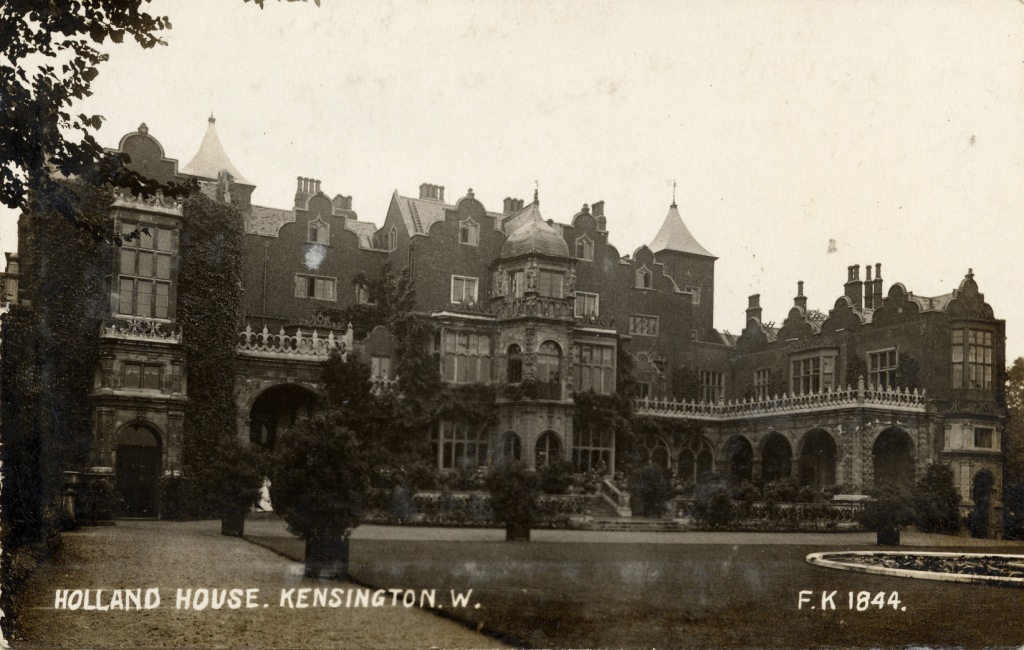
Holland House as it was in 1884 via
So what happened next?
Holland House was granted Grade I listed building status in 1949, under the auspices of the Town and Country Planning Act 1947; the Act sought to identify and preserve buildings of special historic importance, prompted by the damage caused by wartime bombing.
The building remained a burned-out ruin until 1952, when its owner, Giles Fox-Strangways, 6th Earl of Ilchester, sold it to the London County Council (LCC). The remains of the building passed from the LCC to its successor, the Greater London Council (GLC) in 1965, and upon the dissolution of the GLC in 1986 to the Royal Borough of Kensington and Chelsea.
Today, the remains of Holland House form a backdrop for the open air Holland Park Theatre, home of Opera Holland Park. The YHA (England and Wales) & London Holland Park youth hostel is now located in the house. The Orangery is now an exhibition and function space, with the adjoining former Summer Ballroom now a restaurant, The Belvedere. The former ice house is now a gallery space. The grounds provide sporting facilities, including a cricket pitch, football pitch, and six tennis courts.
Via: Royal Borough of Kensington & Chelsea
Would you like to support Flashbak?
Please consider making a donation to our site. We don't want to rely on ads to bring you the best of visual culture. You can also support us by signing up to our Mailing List. And you can also follow us on Facebook, Instagram and Twitter. For great art and culture delivered to your door, visit our shop.
